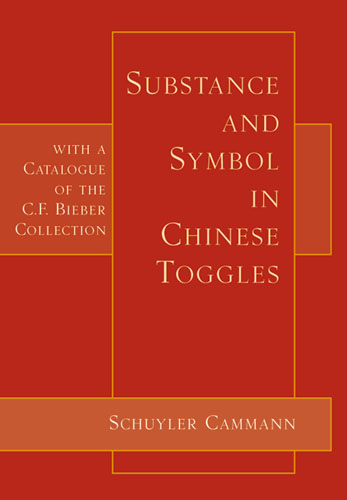
Substance and Symbol in Chinese Toggles
With a Catalogue of the C.F. Bieber Collection
by Schuyler Cammann
Although the Japanese belt ornaments known as netsuke have long been poplar with collectors and much written about, the Chinese toggles which preceded them have gone little noticed. Professor Cammann’s long out of print work was the first book in any Western language to discuss them. Using examples from the C.F. Bieber collection and other private and museum collections, Professor Cammann discusses every aspect of these toggles, from the selection of materials through the methods used to make them and choices of motif and decoration.
Toggles were chiefly made and worn by common people and thus form part of China’s rather neglected folk art tradition. Materials were chosen for specific medical or magical reasons assumed to make them efficacious as amulets. Readers are introduced to figures and motifs of Chinese folklore as well as more conventional symbols from the Buddhist and Taoist religious traditions. Mongolian and Tibetan toggles are also discussed, both in terms of their own traditions and contrasted with the more familiar Chinese and Manchu examples.
With over 186 illustrations and a glossary of Chinese and Japanese terms, this detailed and scholarly work will appeal to students and connoisseurs of both netsuke and toggles, as well as East Asian arts and crafts in general.
Schuyler Cammann graduated from Yale University and earned an MA at Harvard and a Ph.D. at Johns Hopkins. He lived and traveled in China extensively, and taught at Yale in China in Changsha. He also taught at the University or Pennsylvania’s graduate school. and for seven years headed the Far Eastern section at the University Museum in Philadelphia. His other books included The Land of the Camel, Trade Through the Himalayas, and China’s Dragon Robes.
256 pp, 7 x 10, Soft
186 monochrome illustrations, glossary, index
ISBN: 978-1-891640-30-8
$40.00





